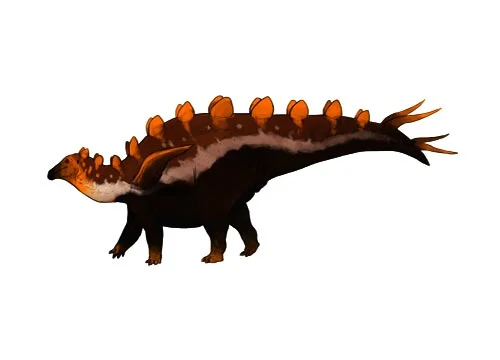Yingshanosaurus (Yingshan or Golden Hills reptile)

ying-shan-oh-sore-us
Zhu – 1994
Herbivore
Estimated 2 meters long
Armoured Dinosaur
jichuanensis
China
Early Jurassic, 200 million years ago
Yingshanosaurus Facts
Yingshanosaurus is a genus of herbivorous dinosaur that lived in what is now China during the early Jurassic period, about 200 million years ago. The name Yingshanosaurus means “Yingshan lizard,” named after the Yingshan Formation in China, where the first fossil remains of this dinosaur were found.
Yingshanosaurus belonged to a group of dinosaurs known as the sauropodomorphs, which were the ancestors of the long-necked sauropods. Yingshanosaurus was a small sauropodomorph, measuring only about 6-7 feet (2 meters) in length and weighing around 50-100 pounds (22-45 kilograms).
The most distinctive feature of Yingshanosaurus was its teeth. Unlike other sauropodomorphs, which had leaf-shaped teeth for stripping leaves off of plants, Yingshanosaurus had sharp, serrated teeth that were adapted for cutting through tougher vegetation. This suggests that Yingshanosaurus may have had a more varied diet than other sauropodomorphs, which were strictly herbivorous.
Yingshanosaurus also had a relatively long neck and tail, which would have allowed it to reach vegetation in high places and use its tail for balance. It likely moved on two legs, although it may have been able to walk on all fours as well.
Overall, Yingshanosaurus provides important insights into the early evolution of sauropodomorph dinosaurs and their adaptations for feeding on different types of plants.



